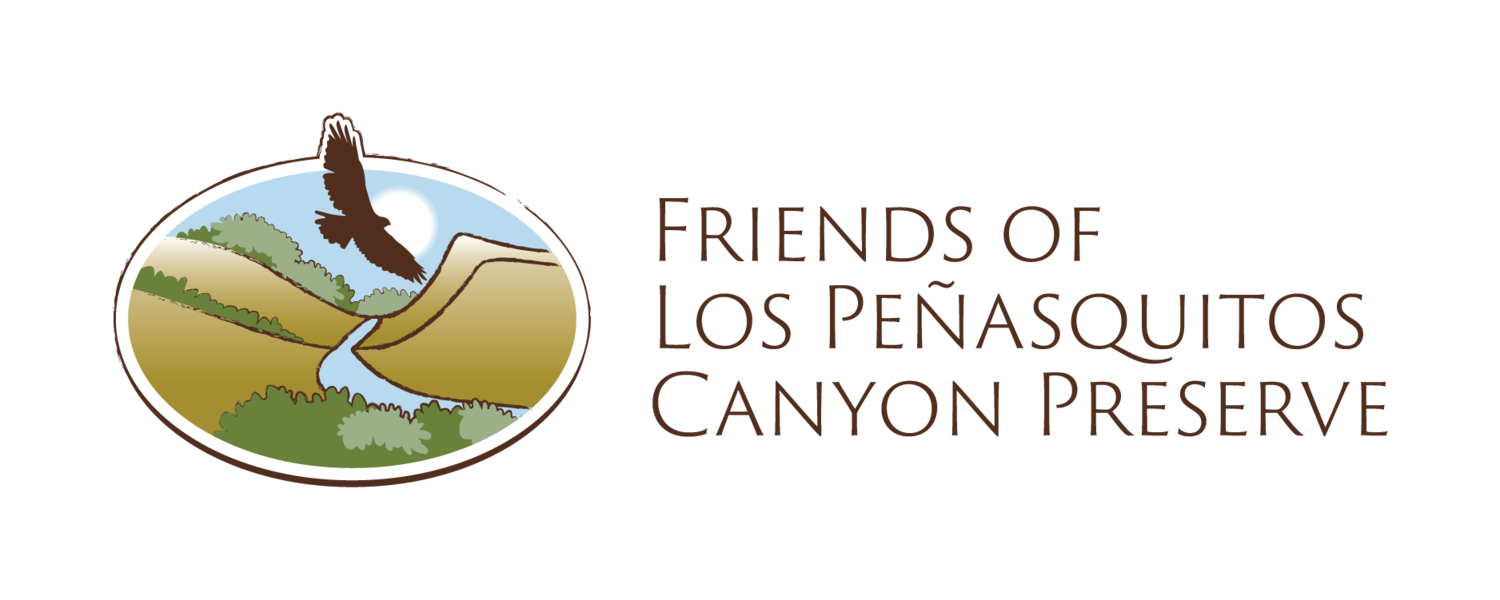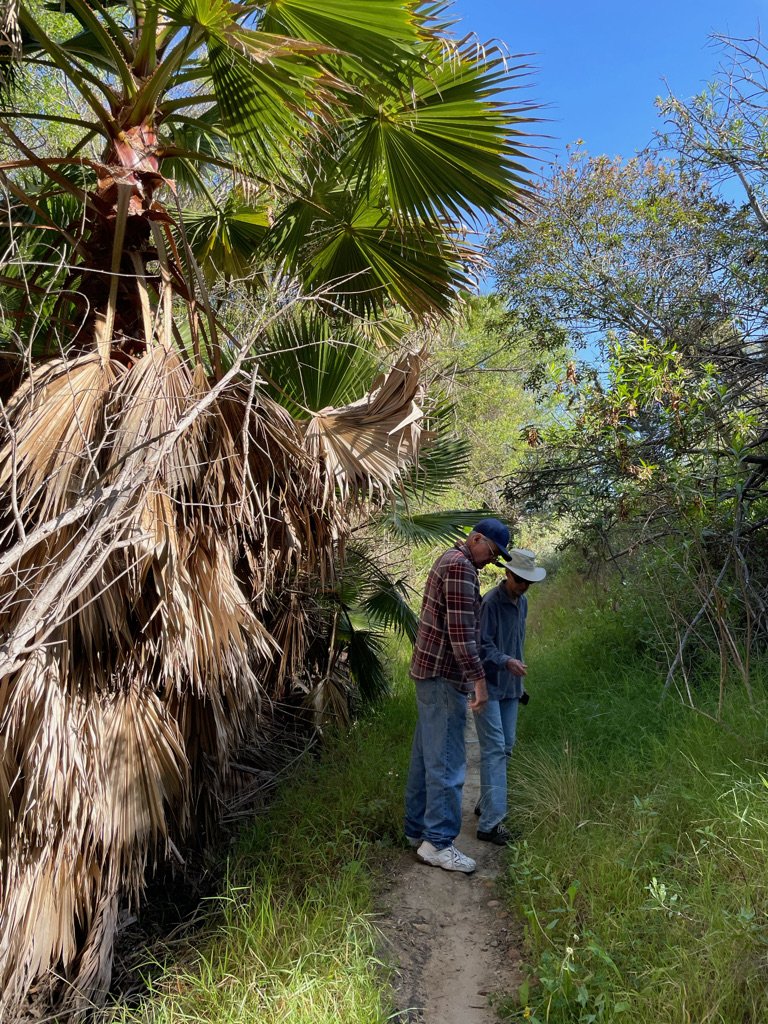Wildlife Corridor Restoration - Darkwood Canyon Grant Project
By Mike Kelly
This spring and early summer the Friends launched a major invasive plant control project in the Darkwood Canyon of Peñasquitos Canyon Preserve. This corridor parallels Darkwood St. in Rancho Peñasquitos in a finger canyon off Peñasquitos Canyon. It runs from Park Village Drive, next to Park Village Elementary School, all the way up to Sundance Ave and north of there where it ends. But, along the way, it has a branch that leads from the finger canyon to the northwest where it connects to the Del Mar Mesa Preserve. It was studied years ago by the San Diego Tracking Team and found to be an important wildlife corridor from Peñasquitos Canyon Preserve to the north and the Del Mar Mesa Preserve. The study by experienced wildlife trackers including Barry Martin, the founder of the SDTT, found bobcat, coyote, mule deer and other species using the crossing. Despite the extension of Camino del Sur to the north across this corridor it is still being used. We’ll see if there are many wildlife mortalities on the road here in the coming year. The City also extended a trail coming up Darkwood Canyon to this offshoot canyon to the Mesa.
The invasive plants in the canyon include Pampas grass (Cortaderia selloana), Artichoke thistle (Cynara cardunculus), Sweet fennel (Foeniculum vulgare), Black mustard (Brassica nigra), Garland chrysanthemum, and others. What do they do? Most are perennials that come up in the same place year after year, but they spread out, below and above ground, crowding out native plants. The most important native plant at risk here is Coastal Scrub oak (Quercus dumosa), an endangered coastal shrub that produces a nice crop of acorns.
Beth Mather and Les Braund survey Darkwood Canyon in April 2022
Photo by Antonella Zampolli
The canyon is a nice walk or bike ride up the narrow canyon lined with the endangered Scrub oaks along much of the route. There were many native wildflowers along the way such as big patches of Canchalagua (Zeltnera venusta) and Golden stars (Bloomeria crocea) in June of this year. There was also Golden yarrow (Eriophyllum confertiflorum), and Purple nightshade (Solanum parishii). When City Ranger Gina Washington recommended this as a project, the Friends readily agreed.
Canchalagua (Centaurium exaltatum)
An annual herb native and widespread in California. Big patches in Darkwood Canyon. Photo by Mike Kelly
A patch of Chalk leaf Dudleya (Dudleya pulverulenta)
In Darkwood, next to the trail, one of the largest patches I have ever seen. The bloom, not seen here, is a brilliant red. Photo by Mike Kelly.
The Friends had done work as volunteers in the canyon off and on but never consistently enough to gain real control over the invasives. So, the Friends decided to fund this project along with generous help from the POPs foundation (Protect our Preserves). The Friends hired Black Sage Environmental to do the control work. They are a company the Friends used for our big Eucalyptus and tamarisk removal work at Lake Hodges several years ago. They are a habitat restoration company we were satisfied and comfortable with. They went into the canyon on a number of days to do the work all the way from Park Village Rd. to north of Sundance Ave.
Beth Mather, president of the Friends and Mike Kelly, conservation chair, inspected the site several times to make sure the work was being done properly. We identified species that were missed and that were controlled on another pass. This is a two-year project. Most of the weed species require more than one year of control work, in this case, spraying herbicide. Some of the perennials have deep roots and one year of spraying isn’t enough to kill all of the roots, hence the second year of spraying. The annuals, such as the mustard mustard have a seed ‘bank’ of 2 years, meaning there will be new plants in year 2 to control.
Dead Pampas grass (Cortaderia selloana)
Hundreds of this invasive were treated by Black Sage EnvironmentaL, the contractor hired by the Friends to do the invasives work in this canyon. Pampas grass is impossible to keep out of any site with water or moist soils because its seed is wind dispersed, meaning it’s everywhere, traveling long distances on the air in great numbers. Photo by Mike Kelly.
Dead artichoke thistle (Cynara cardunculus)
Photo by Mike Kelly.
In August Kelly, Mather and Del Brooks did a sweep to catch missed and new invasives such as stinkwort (Dittrichia graveolens). The latter is a late sprouter and bloomer. Mather also went in a couple of times in the upper canyon. Next year more work will be needed.
Friends President Beth Mather and volunteer Del Brooks survey treated weeds in Darkwood Canyon.
Photo by Mike Kelly






